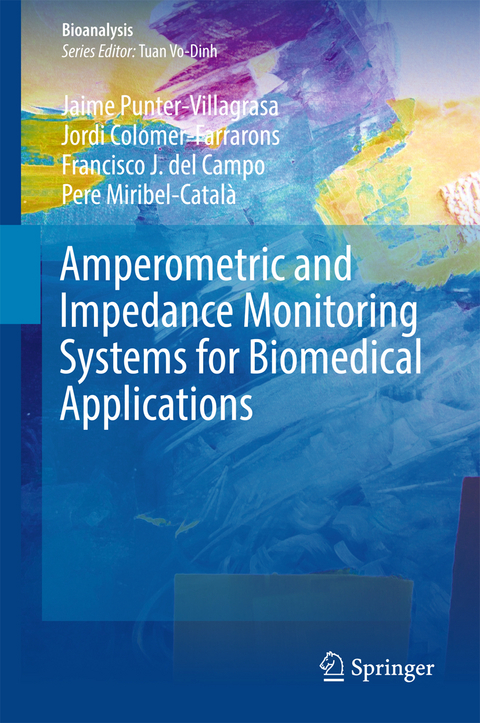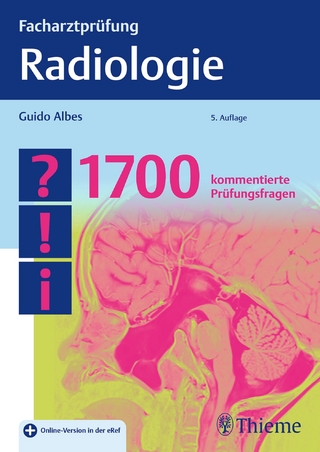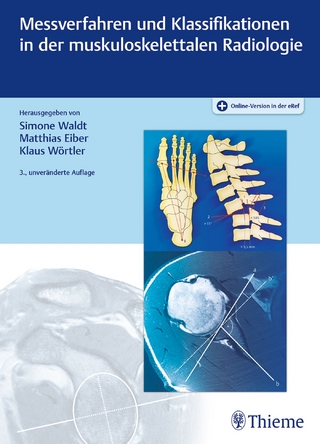
Amperometric and Impedance Monitoring Systems for Biomedical Applications
Springer International Publishing (Verlag)
978-3-319-64800-2 (ISBN)
The book presents the conception and realization of a pervasive electronic architecture for electrochemical applications, focusing on electronic instrumentation design and device development, particularly in electrochemical Point-of-Care and Lab-on-a-Chip devices, covering examples based on amperometric (DC) and impedance detection (AC) techniques. The presented electronics combine tailored front-end instrumentation and back-end data post-processing, enabling applications in different areas, and across a variety of techniques, analytes, transducers and environments.
It addresses how the electronics are designed and implemented with special interest in the flow process: starting from electronic circuits and electrochemical biosensor design to a final validation and implementation for specific applications. Similarly, other important aspects are discussed throughout the book, such as electrochemical techniques, different analytes, targets, electronics reliability and robustness.The book also describes the use of the presented electronics in different electrochemical applications through some examples: instantaneous and non-destructive cellular monitoring and portable glucose monitoring device.
Moreover, the book aims to introduce a comprehensive approach to electronic circuits, techniques and electrochemical sensors in POC devices to a general audience of students in biomedical and electronics engineering, scientists, and engineers.
Dr. Jaime Punter-Villagrasa received his BSc. degree in Electrical Engineering from University of Barcelona (UB) in 2008. From 2007 to 2008 he worked as firmware design engineer at the printing department from Hewlett-Packard Development Company. In 2010, he received his MSc. degree in Electrical Engineering from University of Barcelona (UB). In 2016 he received his PhD degree from the UB. Since 2008, he works as fellow researcher at the BioEngineering and NanoBioEngineering-SIC-BIO Group of the UB, focusing on low-voltage low-power circuits, interface circuits for biomedical applications, and microelectronic design, and since 2015 collaborates with the IMB-CNM (CSIC) within the DADDi2 project. Dr. Jordi Colomer-Farrarons received his BSc. degree in Electrical Engineering from EUSS (Salesians Technical Engineering School) in 2002. From 2002 to 2005 he worked as hardware design engineer at the automotive company Francisco Albero SA. In 2005, he received his MSc. degree in Electrical Engineering from University of Barcelona (UB). In 2010 he received his PhD degree from the UB. Since 2009, he works as fellow researcher at the BioEngineering and NanoBioEngineering-SIC-BIO Group of the UB, focusing on low-voltage low-power circuits, smart power, harvesting circuits, interface circuits for biomedical applications, and microelectronic design. From April to July 2009, he joined the Designs Service Department at IMEC’s INVOMEC Division (Belgium). On 2011, he was with the HOLST Centre at the Eindhoven Campus (The Netherlands) and in 2014 he moves to LAAS-CNRS in Toulouse (France) as a visiting researcher. Since July 2015 he is the Biomedical Engineering Master’s Degree Coordinator (UB) and since 2016 collaborates as visiting professor with the Instituto Tecnológico de Estudios Superiores de Monterrey (ITESM-TEC) (Monterrey - Mexico). F. Javier del Campo is a staff scientist at the National Microelectronics Centre, IMB-CNM (CSIC). Javier is a specialist in the miniaturization and integration of electrochemical devices, particularly sensors and biosensors, for Health Applications. Dr. del Campo holds a BSc in Chemistry from Strathclyde University (UK) and the University of the Basque Country (ES), and obtained a DPhil from the University of Oxford (Electrochemistry). After his doctoral studies, Javier worked joined Accents plc (now Accentus Medical Ltd.), in the UK, where he took part in a number of contract research projects dealing with industrial-scale electrochemical applications. In 2004, Javier joined the National Microelectronics Centre. His work on miniaturization has led him to combine a range of fabrication techniques (micro- and nano- fabrication, screen-printing, rapid prototyping) and Electrochemical methods.Dr. Pere Miribel-Català received his MSc. degree in Physics from the University of Barcelona (UB) in 1994. From 1993 to 1999 he was research fellow at Systems for Instrumentation and Communications Laboratory (SIC Lab) of the University of Barcelona working on high voltage smart power circuits and microelectronic design. He was visiting research fellow in 1998 at LAAS-CNRS laboratory (Toulouse, France). He received his PhD degree from the University of Barcelona in 2000. He also worked designing power management integrated DCDC converters during a postdoctoral stage at the design center of ON semiconductor Inc. (Toulouse, France). Since 2003 he is Associate Professor at the Electronics Department and part of the BioEngineering and NanoBioEngineering-SICBIO Group of the University of Barcelona. His research topics are focused on low-voltage low-power integrated circuits, interface and analog processing circuits, particularly for biomedical applications, smart power and power management circuits. He was the Biomedical Engineering Master Coordinator (UB) from March 2013 till July 2015.
Acknowledgements.- Abstract.- Abbreviations.- Contents.- List Of Figures.- 1 Introduction.- 2 Electronics architectures Box.- 3 Design, Test and Validation of the proposed Architecture.- 4 Validation of the Pervasive Architecture with different applications.- 5 New Generation of POC Device: AN Hematrocrit (HCT) Detection Case.- 6 Conclusions.- Appendix A: Schematics, Design and Validation of Different Potentiostat Topologies.- Appendix B: Schematics, Design and Validation of an Electronic Device for EIS Applications.- Appendix C: Schematics, Design and Validation of the HCT POC Device.
| Erscheinungsdatum | 14.10.2017 |
|---|---|
| Reihe/Serie | Bioanalysis |
| Zusatzinfo | VIII, 241 p. 145 illus., 75 illus. in color. |
| Verlagsort | Cham |
| Sprache | englisch |
| Maße | 155 x 235 mm |
| Gewicht | 547 g |
| Themenwelt | Medizinische Fachgebiete ► Radiologie / Bildgebende Verfahren ► Radiologie |
| Naturwissenschaften ► Physik / Astronomie ► Angewandte Physik | |
| Schlagworte | Amperometry and Bioimpedance Detection • Amperometry and Electrochemical impedance detectio • Amperometry and Electrochemical impedance detection • Biomedical active data feedback • biomedical engineering • Biomedical Engineering/Biotechnology • Electrochemistry • electrochemistry & magnetochemistry • Electrochemistry & magnetochemistry • Health Informatics • Information technology: general issues • low-cost Point-of-Care • Measurement Science and Instrumentation • Medical and Radiation Physics • Medical equipment & techniques • Medical equipment & techniques • Nuclear chemistry, photochemistry & radiation • Nuclear chemistry, photochemistry & radiation • Pervasive Electronics Architecture • Physics • Physics and Astronomy • Point-of-care devices • Radiology • Scientific standards, measurement etc • Voltammetric and amperometric techniques |
| ISBN-10 | 3-319-64800-4 / 3319648004 |
| ISBN-13 | 978-3-319-64800-2 / 9783319648002 |
| Zustand | Neuware |
| Haben Sie eine Frage zum Produkt? |
aus dem Bereich


